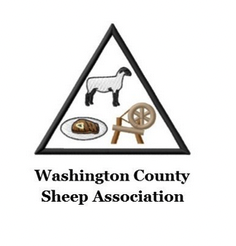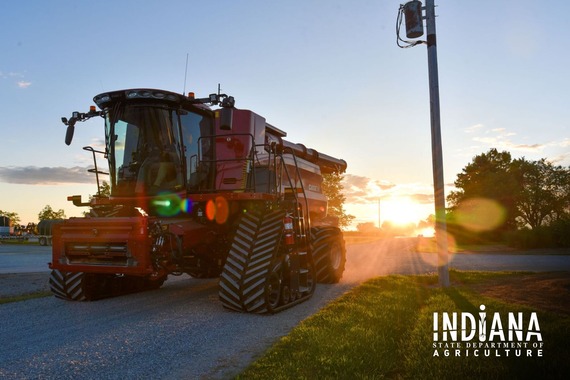
The Washington County Extension Board Annual Meeting & 4-H Recognition Banquet is Monday, October 21 at Cornerstone Hall (1500 RC Morris Dr., Salem) at 6:30 pm.
The evening will feature a delicious buffet, 4-H volunteer and youth awards, Extension Board recognition, and Purdue Extension updates.
Donations will be collected to assist Washington County’s Purdue CARET members.
Reservations are required by Monday, October 14, 2024 to Purdue Extension – Washington County at 812-8834601.
This event is made possible by generous sponsors.

The 2024 Area 2 Pesticide Applicator Program is scheduled for Tuesday, November 12, 2024 in three locations. RSVP’s are appreciated by Friday, November 8, 2024, but not required.
Clark County Community Building (9608 Highway 62, Charlestown) from 9:00-11:00 am. RSVP to
Washington County Fairgrounds 4-H Building (118 N. Fair St., Salem) from 1:00-3:00 pm. RSVP to
Purdue Extension – Harrison County Office (247 Atwood St., Corydon) from 6:00-8:00 pm. RSVP to
Topics at all three locations:
Cover Crops & Soil Nutrition in a Corn & Soybeans with Introduction to Transitioning to Organic – Ashley Adair, Purdue Organic Ag. Specialist.
Update on Weed Control in Corn & Soybeans – Bill Johnson, Purdue Weed Science Specialist.
Worker Protection Standards/Regulatory Topic – Local Extension Educator
The program and Private Applicator (PARP) credits are free thanks to sponsorship from the Indiana Corn Marking Council and Indiana Soybean Alliance. Commercial applicator credits (1, 11, 14 & RT) are available. Participants receive credit for attending one program.

Free soil sampling program available for Indiana farmers
INDIANAPOLIS (Sept. 23, 2024) — The Indiana State Department of Agriculture (ISDA) and partners throughout the state have worked with the Gulf Hypoxia Program (GHP) to develop a no-cost program with a focus on increasing the knowledge and use of soil sampling as a nutrient management practice to benefit farm operations. The program, titled Indiana’s Mississippi River Basin Soil Sampling Program, is open now for applicants through Nov. 1, 2024.
“Soil health is incredibly important, and our farmers remain diligent in protecting and enhancing their farms’ soil properties,” said Lt. Gov. Suzanne Crouch, Secretary of Agriculture and Rural Development. “One way to enhance soil health is to identify nutrient levels via soil sampling. Unfortunately, this can be another expense farmers cannot afford, so we are thankful that with the help of our partners, farmers can sign up to have their soil sampled and tested at no cost.”
ISDA promotes the importance of nutrient management and the principle of the 4R Nutrient Stewardship framework. The 4R framework incorporates using the “Right Source, Right Rate, Right Time, and Right Place” to achieve cropping system goals. The program focuses on soil sampling and testing because it is a key component, and first step, of developing a plan for nutrient management.
Soil sampling provides an assessment of the soil’s fertility which can be used for making fertilizer application recommendations, assessing available nutrients over time, increase farmer profitability and enhance environmental protection by reducing the risk of nutrient loss. This project was developed to help further Indiana’s State Nutrient Reduction Strategy efforts.
“Farmers bottom lines are tighter than ever, so this free program will be welcomed again with open arms,” said ISDA Director Don Lamb. “Last year’s free soil sampling program was so successful we had to close program sign-ups sooner than anticipated to ensure we had enough available resources, so we are beyond excited to bring this program back to Hoosier farmers this fall.”
This program includes row crop, pasture, hay and specialty crop fields located within Indiana’s portion of the Mississippi River Basin. Eligible landowners will be prioritized by acreage enrolled (i.e., 100 acres or less), fields that have never been soil sampled and fields that haven’t been sampled regularly (i.e., within the last 4 years). Further prioritization may be implemented based on ISDA’s workload capacity. This program excludes hobby gardens and private lawns. Interested farmers can sign-up online at ISDA’s website or by reaching out to
Sign-ups begin Monday, Sept. 23, 2024, and ISDA is accepting registrations until Friday, Nov. 1, 2024. To sign up, or if you have any questions, please contact Ophelia Davis at 317-232-0305 or
This program is meant to demonstrate the importance of soil sampling and the valuable information it can provide. This program is not meant to act or replace an operation’s existing soil testing schedule. This program was made possible thanks to ISDA, Indiana Soybean Alliance, Indiana Corn Marketing Council, Indiana Agriculture Nutrient Alliance (IANA),Indiana Conservation Partnership (ICP) members, farmers and crop advisors.

The Washington County Sheep Association will hold its 18th annual Midwest Hair Sheep Sale on Saturday, Oct. 5, at 1 p.m. EDT at the Washington County Fairgrounds located at 118 E. Market St. in Salem. Sheep will be penned and ready for viewing by 11 a.m.
Thirty-one rams, 88 ewes, 1 pen of ewes, and 2 flocks from Indiana, Illinois, and Virginia are consigned. Breeds include registered and commercial Katahdins, Dorpers and White Dorpers. A complete listing of consignments is available at: https://extension.purdue.edu/county/washington/index.html.
For more information, contact the Washington County Sheep Association: Aaron Walker, 812-620-3356; Jason Webster, 812-752-5700, or Purdue Extension – Washington County, 812-883-4601.
Anyone wanting to start a flock, add to their flock, or learn more about the hair sheep industry is encouraged to attend this sale.
The Washington County Sheep Association will have concessions available at the sale.

Harvest season is officially underway for Indiana’s 94,000 farmers, which means more slow-moving farm equipment will be on Indiana’s rural roads and highways. To keep Hoosiers safe this year, state agencies are asking motorists to be alert and patient, as they share the road with farm equipment this fall.
“The fall is an exciting time for all Hoosiers as the temperatures cool and the leaves turn colors. And Hoosier farmers share that excitement as they prepare to begin harvest,” said Lt. Gov. Suzanne Crouch, Indiana’s Secretary of Agriculture and Rural Development. “While traveling rural roads and highways this fall, remember to watch for large farm equipment moving between fields as they work to harvest the crops, and be sure to know the proper steps to safely navigate around.”
In 2022 four vehicles were involved in crashes with farm equipment in Indiana which resulted in one death, according to the National Highway Traffic Safety Administration.
“Moving farm equipment can be one of the most dangerous parts of a farmers job,” said Don Lamb, director of the Indiana State Department of Agriculture. “When motorists know how to safely navigate around farm equipment, our roads are safer. By working together, farmers and everyday Hoosiers can ensure they arrive safely to their destination.”
Farm equipment during harvest season could include tractors, combines, grain carts, grain wagons and large trucks hauling agricultural products. These vehicles are wide, sometimes taking up most of the road, and often travel at speeds no greater than 25 mph.
The following list includes several safety tips for motorists approaching large farm equipment:
- Farmers will pull over when they are able to let motorists pass, but it may take time for them to get to a safe place to do so.
- Be alert. Farm equipment is wide, sometimes taking up most of the road.
- Be careful when passing. Do not pass in a designated “No Passing Zone” or within 100 feet of any intersection, railroad grade crossing, bridge, elevation structure or tunnel.
- Do not try to pass a slow-moving vehicle on the left without ensuring that the vehicle is not planning a left turn. It may appear that the driver is pulling over for you to pass when it is actually preparing to turn. You will drive right into its path, endangering yourself and the farmer.
- Avoid tailgating, as some farm equipment might have to make sudden stops along the road.
- Allow plenty of time to get to a destination, be aware of alternate routes and avoid distractions.
“When you see farmers out working and moving from field to field, please be patient as they work to harvest their crops which are needed to help feed our communities and the world,” said Doug Carter, Indiana State Police Superintendent. “Let’s all work together to help ensure everyone’s safety on our roadways.”
For a list of safety tips, click here or visit isda.in.gov. Click here for a video message created by Hoosier Ag Today, in partnership with Keystone Corporative. The following organizations will be working together to share this important safety message during planting season: Hoosier Ag Today, Indiana Department of Homeland Security, Indiana Department of Transportation and Indiana State Police.
SalemLeader.com
Leader Publishing Company of Salem, Inc.
P.O. Box 506
117-119 East Walnut Street
Salem, Indiana. 47167
Phone: 812-883-3281 | Fax: 812-883-4446
Business Hours:
Mondays through Fridays, 9:00am - 5:00pm
News:
news@salemleader.com
Office:
office@salemleader.com
Publisher:
publisher@salemleader.com
Business
- More Business News
- Go To Guide
- Business Directory
- Auctions
Education
- More Education News
Opinion
- Editorials
- Letters to the Editor
- Columns
- Unsung Heroes
- Days Gone By
- In the Garden
- Guest Columns
- Reader's Poll
- Salem Leader Forum
- Questions and Answers
Church
- Bible Aerobics
- Church News
- Church Directory

